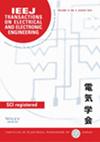求助PDF
{"title":"Petri Net Based Bisimulation and Four-Color Theorem for Flexible Resource Allocation in Manufacturing Processes","authors":"Shanchen Pang, Yuntao Fan, Min Wang","doi":"10.1002/tee.70061","DOIUrl":null,"url":null,"abstract":"<p>Flexible resources, as key resources with flexibility and schedulability in the event of demand changes, and their targeted allocation to specific manufacturing cells are of great significance in the manufacturing process. Petri net is a discrete graphical modeling tool which can visualize the relationships and flows between the manufacturing processes and resource allocations. The flexible adaptation and extension capabilities of Petri net can accurately describe the resource flows in resource allocation processes. At the same time, the combination of Petri nets and bisimulation methods allows the construction of simulation processes that require qualitative allocation of flexible resources, which ensures that resource flows are accurately allocated into specific manufacturing cells. This paper aims to model how the four-color theorem and the Petri net based bisimulation approach can be fully combined to simulate a subnet composed of manufacturing units where flexible resources need to be allocated in a targeted and private manner. In this paper, we apply the four-color theorem as a theory tool to combine with Petri net based bisimulation to ensure resource independences and privacies among manufacturing units in the flexible resource allocation. The Petri net modeling with the four-color theorem is proposed, and definitions of Petri net based bisimulation with non-interference combining with the four-color theorem are given. We also give the mathematical proofs and validations for BNDPN with the Four-Color Theorem. Furthermore, we evaluate the performance of the strategy of BNDPN with the Four-Color Theorem in flexible resource allocation and compare the evaluation results with existing works. © 2025 Institute of Electrical Engineers of Japan and Wiley Periodicals LLC.</p>","PeriodicalId":13435,"journal":{"name":"IEEJ Transactions on Electrical and Electronic Engineering","volume":"20 11","pages":"1717-1729"},"PeriodicalIF":1.1000,"publicationDate":"2025-07-04","publicationTypes":"Journal Article","fieldsOfStudy":null,"isOpenAccess":false,"openAccessPdf":"","citationCount":"0","resultStr":null,"platform":"Semanticscholar","paperid":null,"PeriodicalName":"IEEJ Transactions on Electrical and Electronic Engineering","FirstCategoryId":"5","ListUrlMain":"https://onlinelibrary.wiley.com/doi/10.1002/tee.70061","RegionNum":4,"RegionCategory":"工程技术","ArticlePicture":[],"TitleCN":null,"AbstractTextCN":null,"PMCID":null,"EPubDate":"","PubModel":"","JCR":"Q4","JCRName":"ENGINEERING, ELECTRICAL & ELECTRONIC","Score":null,"Total":0}
引用次数: 0
引用
批量引用
Abstract
Flexible resources, as key resources with flexibility and schedulability in the event of demand changes, and their targeted allocation to specific manufacturing cells are of great significance in the manufacturing process. Petri net is a discrete graphical modeling tool which can visualize the relationships and flows between the manufacturing processes and resource allocations. The flexible adaptation and extension capabilities of Petri net can accurately describe the resource flows in resource allocation processes. At the same time, the combination of Petri nets and bisimulation methods allows the construction of simulation processes that require qualitative allocation of flexible resources, which ensures that resource flows are accurately allocated into specific manufacturing cells. This paper aims to model how the four-color theorem and the Petri net based bisimulation approach can be fully combined to simulate a subnet composed of manufacturing units where flexible resources need to be allocated in a targeted and private manner. In this paper, we apply the four-color theorem as a theory tool to combine with Petri net based bisimulation to ensure resource independences and privacies among manufacturing units in the flexible resource allocation. The Petri net modeling with the four-color theorem is proposed, and definitions of Petri net based bisimulation with non-interference combining with the four-color theorem are given. We also give the mathematical proofs and validations for BNDPN with the Four-Color Theorem. Furthermore, we evaluate the performance of the strategy of BNDPN with the Four-Color Theorem in flexible resource allocation and compare the evaluation results with existing works. © 2025 Institute of Electrical Engineers of Japan and Wiley Periodicals LLC.
基于Petri网的制造过程柔性资源分配双仿真与四色定理
柔性资源作为需求变化时具有灵活性和可调度性的关键资源,如何将其有针对性地分配到特定的制造单元中,在制造过程中具有重要意义。Petri网是一种离散的图形化建模工具,可以将制造过程与资源分配之间的关系和流程可视化。Petri网具有灵活的适应和扩展能力,可以准确地描述资源分配过程中的资源流动。同时,Petri网和双仿真方法的结合允许构建需要柔性资源定性分配的仿真过程,从而确保资源流准确地分配到特定的制造单元。本文旨在模拟如何将四色定理和基于Petri网的双仿真方法完全结合起来,以模拟由制造单元组成的子网,其中需要以有针对性和私有的方式分配灵活的资源。本文以四色定理为理论工具,结合Petri网的双仿真,保证了制造单元之间在柔性资源分配中的资源独立性和私密性。提出了基于四色定理的Petri网建模方法,并结合四色定理给出了基于Petri网的无干涉双仿真的定义。利用四色定理给出了BNDPN的数学证明和验证。在此基础上,利用四色定理对BNDPN策略在灵活资源分配中的性能进行了评价,并与已有的评价结果进行了比较。©2025日本电气工程师协会和Wiley期刊有限责任公司。
本文章由计算机程序翻译,如有差异,请以英文原文为准。


 求助内容:
求助内容: 应助结果提醒方式:
应助结果提醒方式:


